Driving School Diaries, Part II
In which I master a rudimentary driving simulator, before squeezing into a micro-truck…
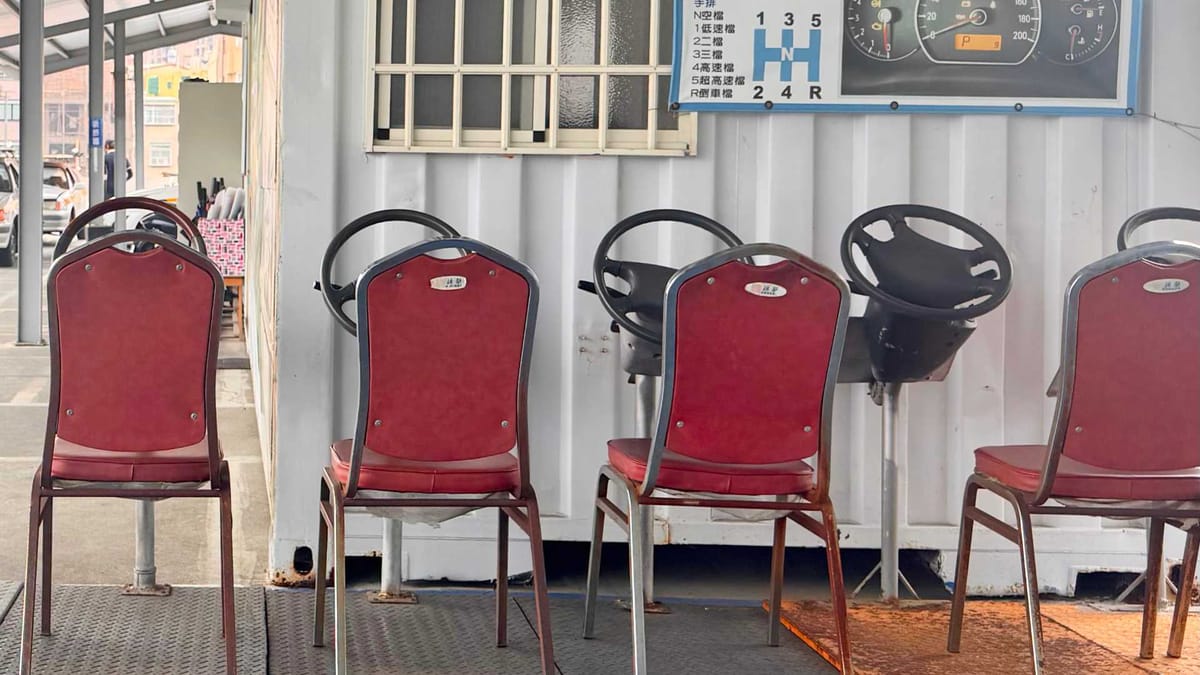
I was told to be at my first driving class 10 minutes early. In the rush to beat traffic, I forgot to apply antiperspirant for perhaps the first time in Taiwan. Then, I was unable to connect my motorcycle helmet’s Bluetooth speaker, and, forgetting that I couldn’t hear Google’s directions, I missed two turns on the way.
Miraculously, I still arrived on time—albeit with a face like a disheveled, sweaty tomato.
I handed over my beautified passport photos and greatly appreciated the receptionist not saying how unlike me they appeared.
I also appreciated hearing the words “please sit and wait” (in Chinese), because the last available chair was immediately next to the AC.
My Chinese is more rudimentary than the driving simulator I would soon be using, but I could definitely understand “please sit and wait”. Unfortunately, the next 30 minutes of my life weren’t so readily decipherable.
Do you speak Chinese?
There were three other students. The receptionist gave us each a double-sided sheet of paper, and proceeded to expand on what it said.
I’d paid NT$1,000 (NZ$50) extra for English-language tuition, but literally the only English words on the page were “iOS” and “Android”. The receptionist spoke no English at all.
She asked me (in Chinese) “do you speak Chinese?”
I replied (in Chinese) “only a little”.
Then she continued in Chinese.
One of my fellow students offered to translate for me. I was extremely thankful, while also feeling guilty for the burden I was placing on the group.
Essentially, the double-sided paper outlined the schedule for future classes; the venue for theory classes (which I was told I could skip); and details of the final theory and practical exams.
The theory exam will be at 7:40am(!) on December 18, followed by two practical exams the same day: one on the school’s test track, and one on an actual road.
We were asked to sign a pink attendance form. The guy next to me kindly showed where to write my name. The box was only long enough for three characters—the usual length of a Chinese name—so I just wrote my initials.
Unfortunately, the guy filled in the wrong box and so, by following his lead, I did as well. The receptionist instructed us to cross out our mistakes and try again.
I said “I’m sorry”, in Chinese.
A line-up of rudimentary driving simulators
We were led outside to a shaded picnic table. One of the instructors, a friendly guy in his 50s, spoke to us at length in Chinese. He paused intermittently so my fellow student could translate. Her English was excellent, but I couldn’t help feeling I should be paying the NT$1,000 English fee to her, not the driving school.
Next, we were taken to a line-up of rudimentary driving simulators.
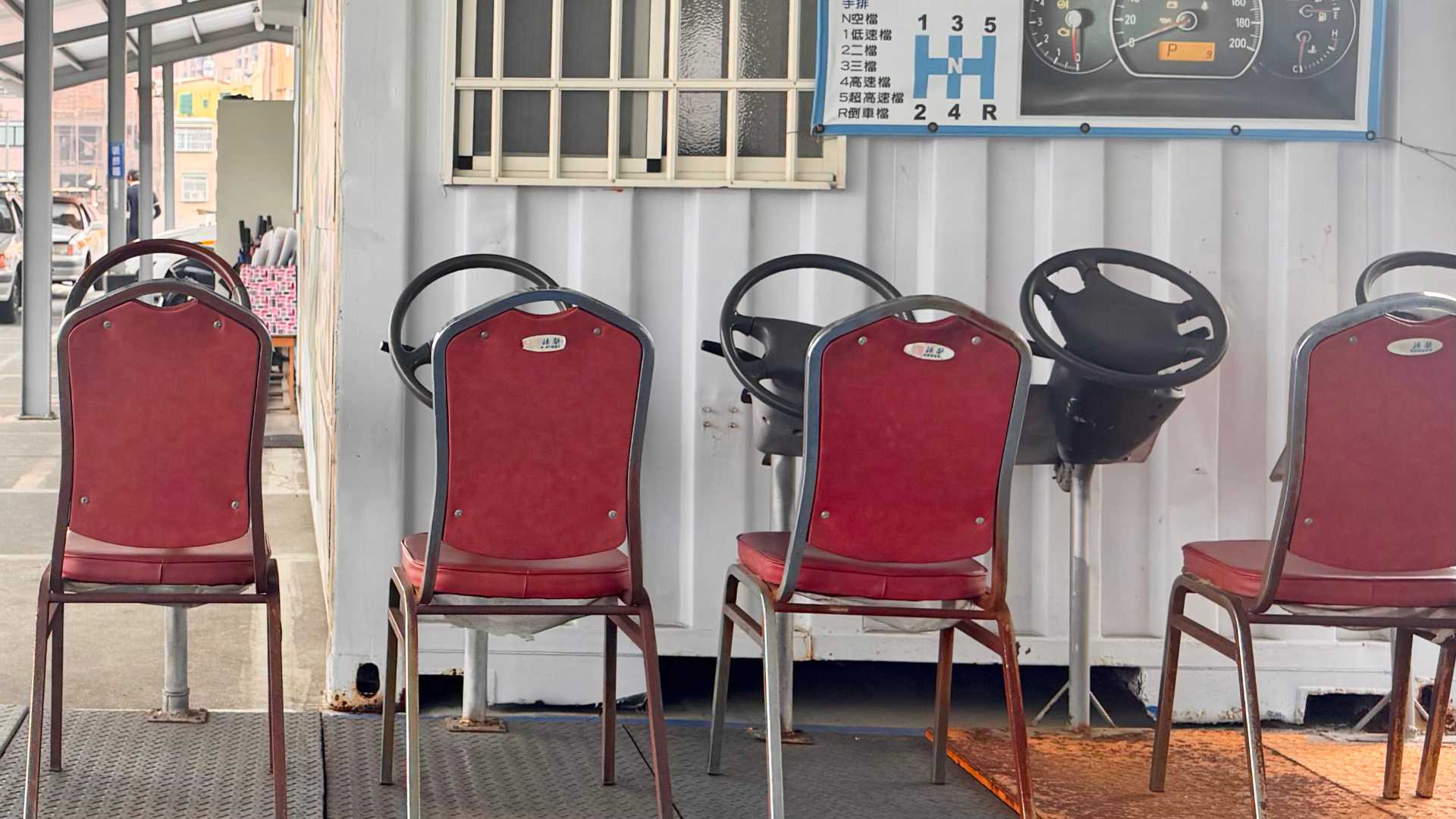
First, we were shown how to turn the steering wheel. We dutifully followed the instructor as he turned left and right, crossing his arms as he did.
When I learned to drive in the ’90s, crossing arms was disallowed—but today, it was best practice. I expertly criss-crossed my way to a pass.
Next, we practiced using the indicator stalks. About 100 times.
Then, we practiced using the headlights and wipers. Once again, I was extremely appreciative of my fellow student, who told me when to activate the “small lights”, “big lights”, “very far distance lights”, and “umbrellas”.
After I mastered the intermittent, low-, and high-speed umbrellas, the instructor pointed to a poster above our heads, and starting talking about gear selection.
As my attention faded in the hazy autumn heat, I entered some kind of automotive switchgear purgatory. But I snapped out of my daze when my classmate hesitated over how to translate the transmission details. Wanting to ease the burden, I said (in Chinese) “excuse me, it’s no problem, I already know that thing”.
The instructor asked if I’d driven a car before. I said (in Chinese, not remembering the word for license) “I know how to drive a car. In New Zealand, I am allowed to drive a car. But in Taiwan, I am not allowed to drive a car”.
The student helped us reach a mutual understanding. Then the instructor beckoned one of his colleagues, who said (in English), “I speak English. You can skip this part, come with me!”
I apologized profusely to my fellow students, and the first instructor, for being so troublesome.
In typical Taiwanese fashion, they were warm and polite in return.
A new-design knob
The car I’d be using for my first lesson was a CMC Super Veryca Pickup. It’s a made-in-Taiwan micro-truck that’s just 3.3 meters long:
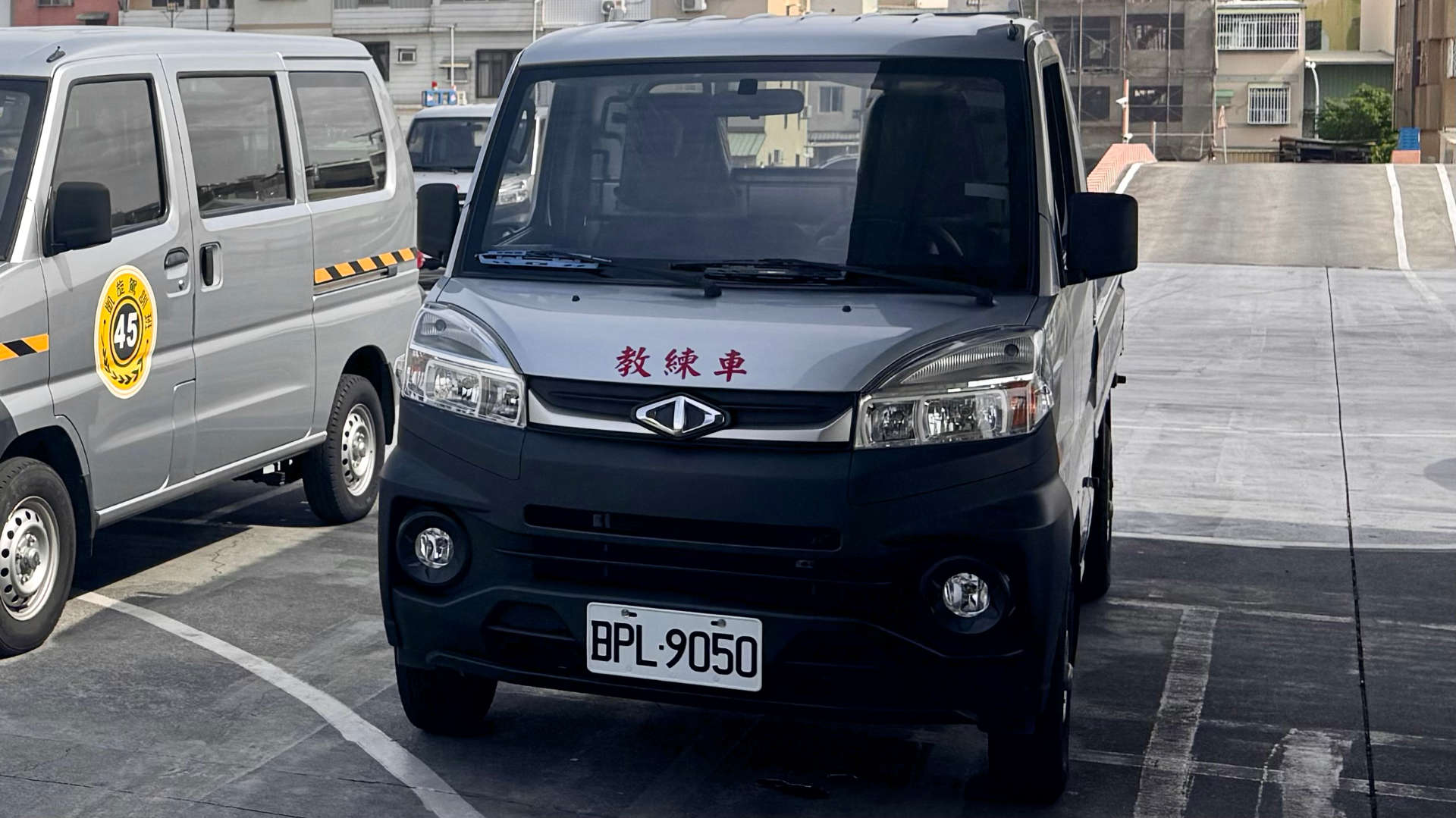
The Super Veryca is super practical. It is:
- 58cm shorter than a Mini Cooper
- 60cm shorter than a Suzuki Swift
- 2.4m shorter than a Cybertruck, but with a cargo deck that’s 50cm longer
According to the CMC website, it also features a “New–Design Knob”:
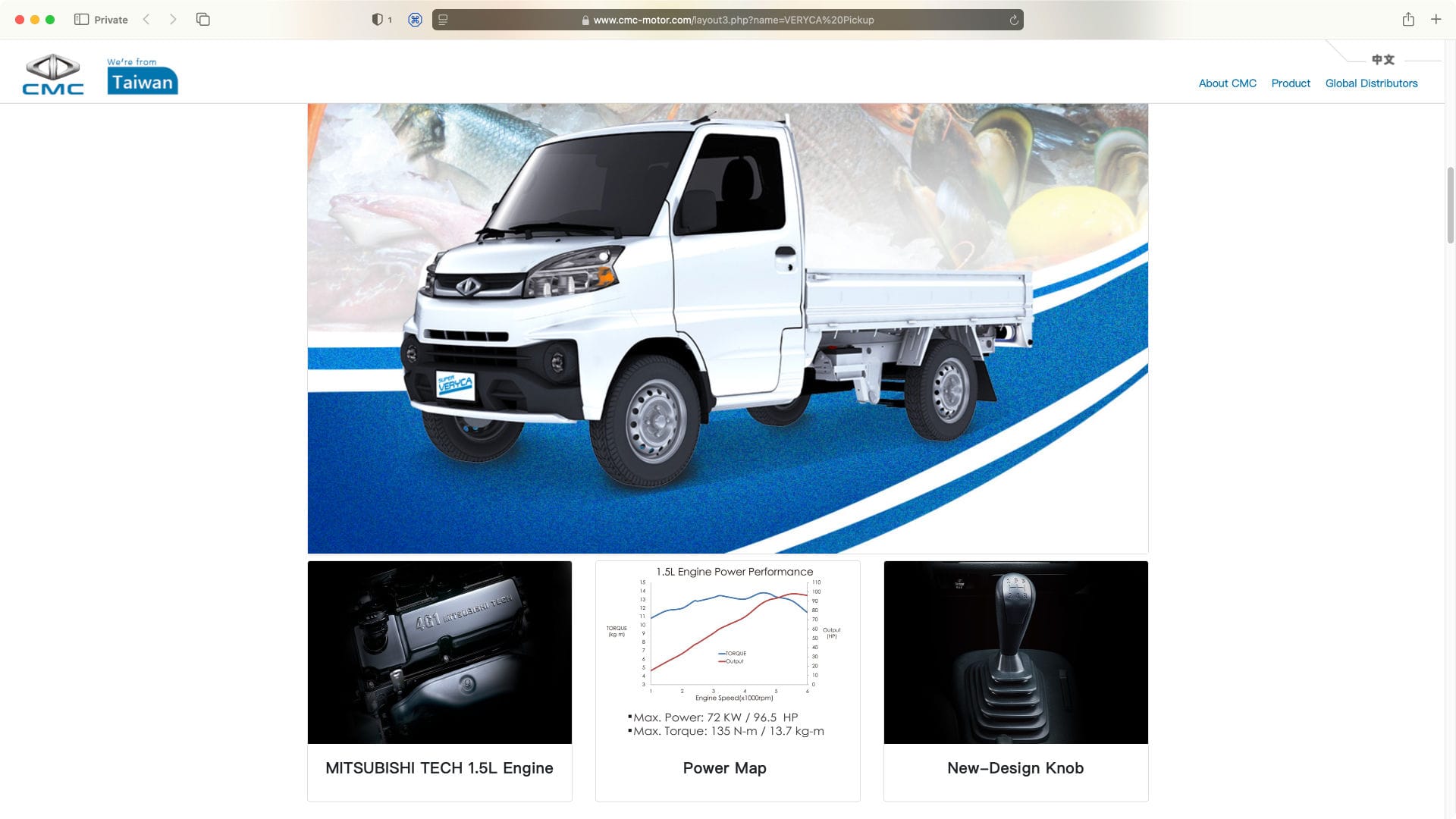
My instructor drove around the track first, demonstrating what was required to pass and how many points would be deducted for each infraction. He used a green laser pointer to highlight things like ideal stopping positions.
Hoping to lower his expectations, I explained I hadn’t driven a manual car since 2016. But when it was my turn to drive, it was a piece of cake. The instructor, who was a kind and friendly guy, said he was happy to have a good student. I said I was happy to have a good coach.
I drove around the test track four times. If it wasn’t for the instructor’s tips (“turn… now!” or “stop… here!”), had it been an actual exam, I would’ve passed four times over.
Learning to drive is easy when you already know how to drive.
Actually, the only thing I risked failing was getting in and out of the driver’s seat. Micro-trucks may be practical, but if you’re 180cm tall with US size 13 feet, it’s hard to get in or out without depressing the foot pedals and knocking the new-design knob.
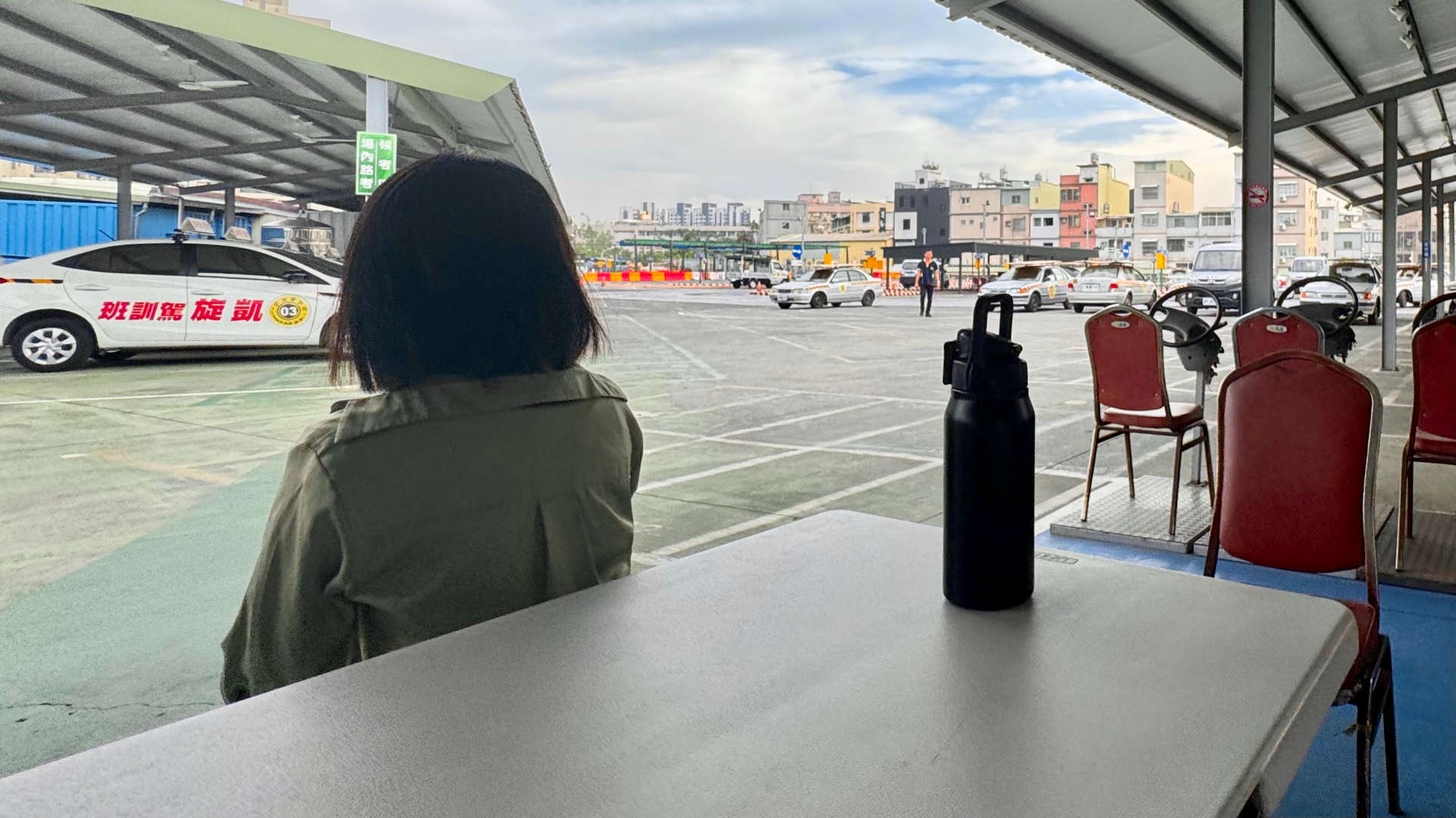
100 minutes down; 1,400 minutes to go
Compared to when I learned to drive in New Zealand in the ’90s, I think Taiwan’s approach has merit:
- As rudimentary as the driving simulators are, for students with zero experience, they’re great for learning the absolute basics
- Driving on a private test track, at speeds so slow the analog speedometer never visibly rises, makes for a comfortable, low-stress start
- As annoying as it is to attend compulsory lessons, they are good for learning best-practice
Today’s 100-minute class went by quickly enough, once I got off the rudimentary driving simulator and into the car. I’m looking forward to the next one.
But probably not the 13 classes after that… I suspect there’s only so many times one can go around a track for 100 minutes, at speeds so slow the analog speedometer never visibly rises, before losing the will to drive.
